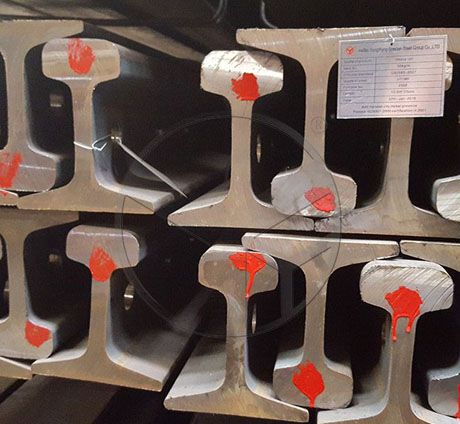How Are Steel Rails Manufactured?
Steel rails, also known as railroad tracks or railway lines, are critical components of railway infrastructure. They provide a stable and durable surface for trains to travel on, ensuring safe and efficient transportation. The manufacturing process of steel rails involves several steps, from raw material preparation to final finishing. In this response, I'll walk you through the key stages involved in manufacturing steel rails.
Raw Material Selection:
The primary material used in the production of steel rails is steel. The steel selected for rail manufacturing is typically a high-carbon steel alloy, known for its strength, durability, and resistance to wear and fatigue. The exact composition of the steel may vary depending on the specific requirements and standards of the rail manufacturer.
Steel Billet Production:
The first step in rail manufacturing involves the production of steel billets. A billet is a semi-finished metal form with a square or rectangular cross-section. The steel billets are typically produced in a steel mill using either the basic oxygen furnace (BOF) or the electric arc furnace (EAF) process.
P50/50kg Railroad Rail From China
Heating and Rolling:
Once the steel billets are ready, they are heated in a furnace to a temperature suitable for rolling. This process is known as the reheat furnace. Heating the billets makes them more malleable and easier to shape during the subsequent rolling process.
After heating, the billets are fed into a rolling mill. The rolling mill consists of a series of rolls that progressively shape the heated billet into the desired rail profile. The rolls apply pressure to the billet, reducing its thickness and increasing its length. This process is known as hot rolling and is typically carried out in multiple passes to achieve the desired rail dimensions.
Head Hardening:
Once the rail profile is formed, the head of the rail, which is the part that comes into direct contact with the train wheels, undergoes a specialized heat treatment process called head hardening. The purpose of head hardening is to increase the hardness and wear resistance of the rail head, ensuring a longer service life. Head hardening is usually achieved through a combination of water quenching and controlled cooling.
Cooling and Cutting:
After the rolling and head hardening processes, the newly formed rails are allowed to cool. Cooling may occur naturally or may involve forced air or water cooling, depending on the rail manufacturer's specifications.
Once the rails have cooled sufficiently, they are cut into individual lengths according to the desired specifications. This is typically done using saws or torch cutting.
Straightening and Straightness Inspection:
The freshly cut rails may undergo a straightening process to correct any deviations or bends that may have occurred during the cooling and cutting stages. Specialized straightening machines apply pressure to the rails, gradually straightening them to meet the required standards.
After straightening, the rails undergo a straightness inspection. This involves measuring the straightness of the rail along its length using precision instruments. Any rails that do not meet the specified straightness criteria are rejected or may undergo additional corrective measures.
End Drilling and Punching:
Rail ends are drilled and punched to accommodate fastening systems, such as rail spikes or bolts. These fastening systems secure the rail to the underlying track structure, providing stability and preventing lateral movement.
Finishing:
The final stage of rail manufacturing involves various finishing processes. This includes surface cleaning to remove any scale or contaminants, as well as corrosion protection measures, such as applying protective coatings or galvanization.
Additionally, the rails may undergo marking or stamping to indicate important information, such as the rail type, manufacturer, and production date. This helps in traceability and maintenance tracking throughout the rail's lifespan.


评论
发表评论